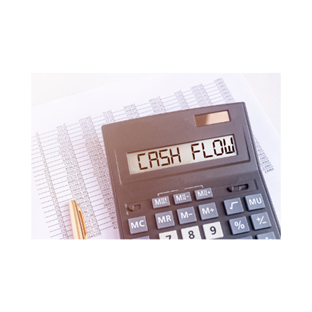
Written by Mark Kallus, Owner & Broker
RentLife® Property Management
MPM® | RMP® | TRPM® | TRLS®
Houston’s Local Property Management Experts

Analyzing Cash Flow in Real Estate Investments
Analyzing Cash Flow in Real Estate Investments
Cash flow analysis is a fundamental aspect of real estate investing that measures a property’s financial viability and profitability. Understanding and analyzing cash flow is crucial for making informed investment decisions, especially for rental properties. Positive cash flow is a key indicator of a successful investment, indicating that the property’s income exceeds its expenses. This blog’ll explore the importance of cash flow analysis in real estate investments and how to conduct a comprehensive cash flow analysis to maximize returns.
Understanding Cash Flow:
In the context of real estate investing, cash flow refers to the difference between the income generated by the property and its operating expenses. The income typically comes from rental payments, while operating expenses encompass property taxes, insurance, maintenance costs, property management fees, mortgage payments, and other related costs.
Positive Cash Flow:
A property has positive cash flow when its income exceeds its expenses. Positive cash flow means that the property generates enough income to cover all operating costs, leaving a surplus that can be used for reinvestment, savings, or other financial goals.
Negative Cash Flow:
A property has negative cash flow when its expenses exceed its income. Negative cash flow indicates that the property is not generating enough income to cover its operating costs, resulting in a financial loss for the investor.
Importance of Cash Flow Analysis:
Cash flow analysis is critical for several reasons:
Profitability Assessment: Cash flow analysis helps investors assess whether a property is financially viable and can generate profits over time.
Risk Management: Positive cash flow provides a financial buffer that can help mitigate unexpected expenses or vacancies.
Lender and Investor Confidence: Lenders and potential investors often evaluate cash flow before providing financing or considering investment opportunities.
Long-Term Wealth Building: Positive cash flow enables investors to build long-term wealth through property ownership and rental income.
Conducting Cash Flow Analysis:
To conduct a thorough cash flow analysis, follow these steps:
- Calculate Gross Rental Income:
Start by determining the gross rental income, the total income generated from rental payments, before any deductions or expenses.
- Estimate Vacancy Rate:
Consider the potential vacancy rate for the property based on historical data or local market trends. A conservative estimate will help account for periods when the property may be unoccupied.
- Account for Operating Expenses:
Identify and calculate all operating expenses associated with the property. This includes property taxes, insurance, property management fees, maintenance costs, utilities, and any other regular expenses.
- Factor in Mortgage Payments:
If the property is financed through a mortgage, factor in the monthly mortgage payments, including principal and interest.
- Calculate Net Operating Income (NOI):
Subtract the vacancy rate and operating expenses from the gross rental income to calculate the Net Operating Income (NOI). The NOI represents the income generated by the property after accounting for all operating costs but before considering financing expenses or taxes.
- Account for Debt Service:
If the property is financed, deduct the monthly mortgage payments from the NOI to determine the property’s pre-tax cash flow.
- Consider Tax Implications:
Assess the tax implications of the property’s income and expenses. Certain tax deductions and incentives related to real estate investment can impact the property’s overall cash flow.
- Analyze Cash-on-Cash Return:
Cash-on-cash return is a key metric used to evaluate the profitability of an investment. It measures the annual return on investment based on the amount of cash invested upfront. A higher cash-on-cash return indicates a more lucrative investment opportunity.
- Evaluate Return on Investment (ROI):
Assess the property’s Return on Investment (ROI) over a specified time frame. ROI considers both cash flow and property appreciation to provide a comprehensive view of the investment’s performance.
- Project Future Cash Flow:
Use historical data and market trends to project future cash flow. Consider factors impacting cash flow, such as rental rate adjustments, market changes, and potential renovations or improvements.
Analyzing cash flow in real estate investments is a critical step for evaluating a property’s financial feasibility and profitability. Positive cash flow indicates that the property generates enough income to cover its operating expenses, making it an attractive investment option. Negative cash flow, on the other hand, may raise concerns about the property’s long-term sustainability. Conducting a comprehensive cash flow analysis enables investors to make informed decisions, assess risk, and identify investment opportunities that align with their financial goals. By carefully evaluating cash flow, real estate investors can build a profitable and sustainable portfolio that maximizes returns and supports long-term wealth-building objectives.
Finding the Right Property Manager is Important.
Are you interested in finding a property management company for your investment property? If so, you’ve come to the right place. At RentLife® Property Management, we offer a full suite of property management services for people who own real estate in Houston and surrounding areas.
RentLife® Property Management CRMC® is the best choice for property management in Cypress, TX. We also offer rentals and property management in Humble, Katy, Spring, The Woodlands, Tomball, Conroe, Houston, Magnolia, and other surrounding areas. Contact us today at www.rentlifepm.com or call 832-562-3600.